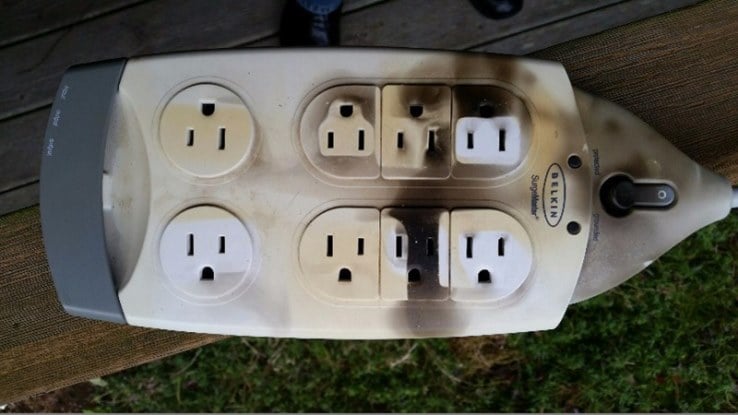Hurricane-force winds can cause significant structural damage and can knock out power lines, potentially causing surge damage in unprotected electronics and appliances when electricity is ultimately restored. With Hurricane Irma having left more than 8 million Florida and Georgia residents in the dark and Hurricane Maria cutting power to the island of Puerto Rico potentially for months, insurance carriers should expect a high volume of hurricane-related power-surge claims in its wake.
|1. Power-surge damage
Power surges often occur when power is restored following service interruptions or outages. High winds during hurricanes (or other powerful storm systems) can lead to outages in a variety of ways. Some of the more common scenarios include falling trees bringing down power lines, lines making contact with one another or with tree limbs, and power poles getting knocked over. Once a power outage occurs, the lines are void of electrical current. Upon restoration of power, the electrical current rushes to fill the “empty space” in the lines (known as an inrush). Electronics and appliances are not designed to handle such power-flow fluctuations, and can be damaged during such events.
Want to continue reading?
Become a Free PropertyCasualty360 Digital Reader
Your access to unlimited PropertyCasualty360 content isn’t changing.
Once you are an ALM digital member, you’ll receive:
- Breaking insurance news and analysis, on-site and via our newsletters and custom alerts
- Weekly Insurance Speak podcast featuring exclusive interviews with industry leaders
- Educational webcasts, white papers, and ebooks from industry thought leaders
- Critical converage of the employee benefits and financial advisory markets on our other ALM sites, BenefitsPRO and ThinkAdvisor
Already have an account? Sign In Now
© 2025 ALM Global, LLC, All Rights Reserved. Request academic re-use from www.copyright.com. All other uses, submit a request to [email protected]. For more information visit Asset & Logo Licensing.









